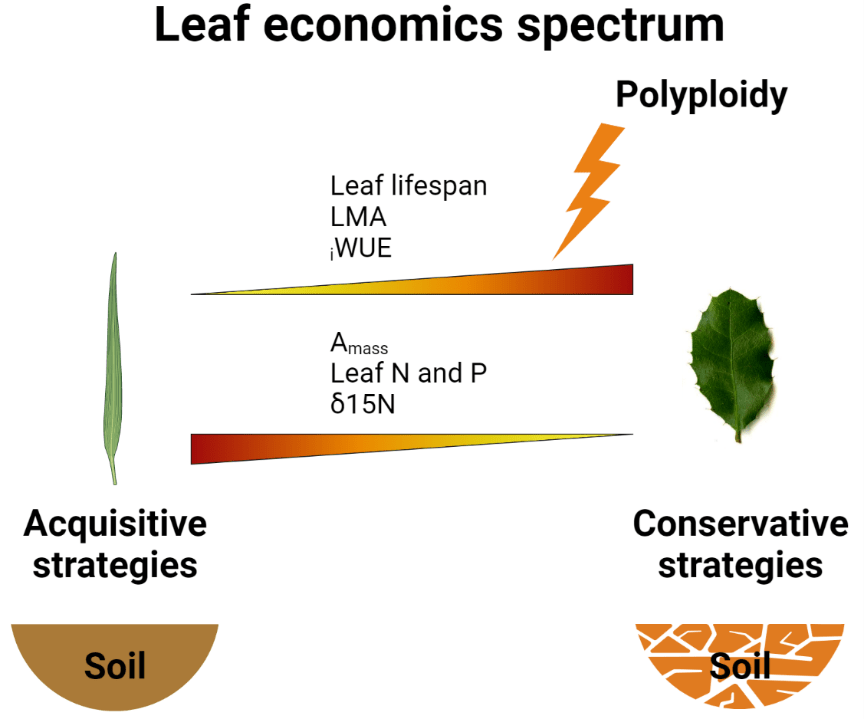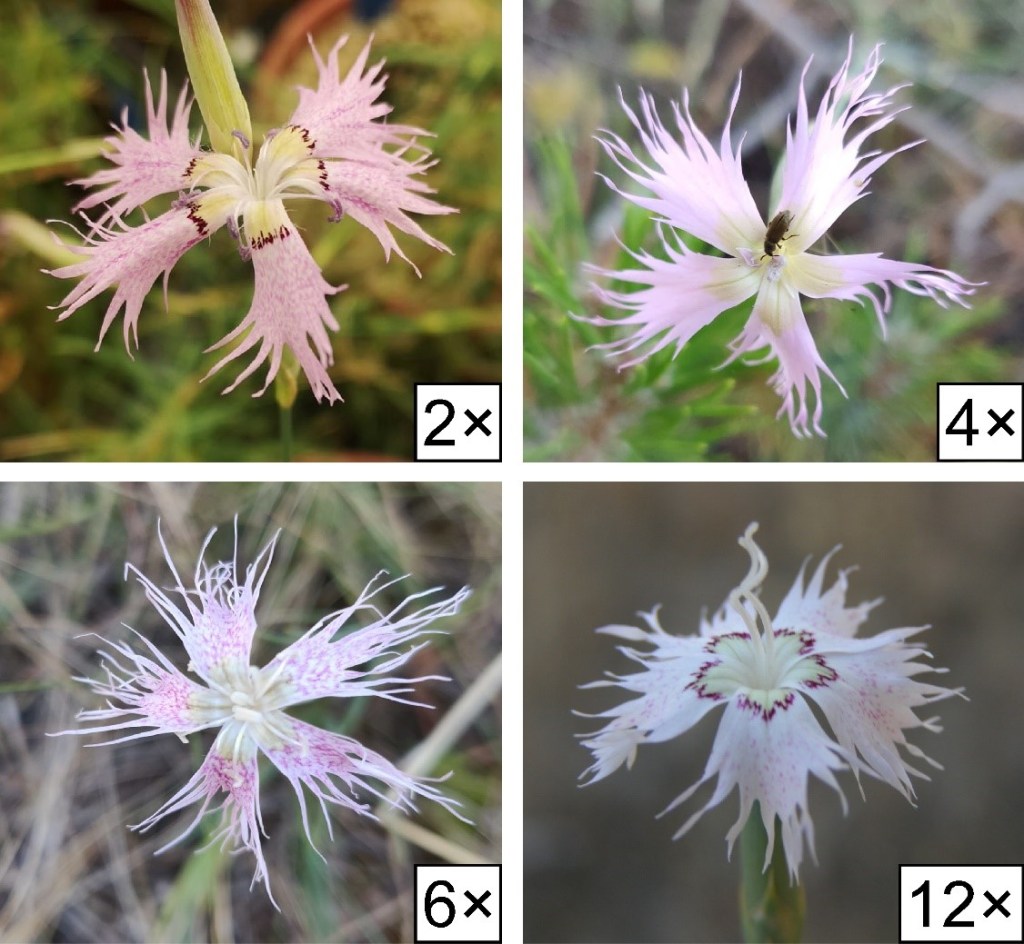Javier López-Jurado discusses recent article: Polyploidy promotes divergent evolution across the leaf economics spectrum and plant edaphic niche in the Dianthus broteri complex. Find out more about role of polyploidy – the state of having more than two paired sets of chromosomes – in overcoming constraints for the evolution of plant functional traits.
Major functional traits in vascular plants are concentrated in a multidimensional space explaining plant form and function. Within the global plant trait variation, the leaf economics spectrum (LES) occupies a differentiated axis defined by the trade-off between plant longevity and growth potential, which in turn reflects the ecological strategy of a given plant species.
To maintain covariation patterns in the LES, several constraints to novel trait associations have been described. From harder to softer, there are biophysical, genetic and selective constraints. Biophysical ones entail unavoidable limitations for plants to construct highly productive long-lasting leaves. However, novel gene associations and other drivers of phenotypic variation (such as plasticity or adaptation) could release the trait integration within the LES and promote divergent ecological strategies along this spectrum. In this regard, trait-environment associations are supposed to be key in the evolution of the LES, specifically through the influence of soil properties.
Polyploidy (i.e., the state of having more than two paired sets of chromosomes) might have a prominent role in this context, since it is considered one of the most powerful forces in nature behind phenotypic novelty and the release of genetic constraints. In our study, we try to fill this gap in plant research by exploring how polyploidy affects the evolution of functional traits (related to nutrient use but also water and light) and the edaphic niche.

We address this question in the Mediterranean autopolyploid Dianthus broteri complex, by comparing LES traits and soil characteristics of natural populations from its four different cytotypes (2×, 4×, 6× and 12×). Our approach, which accounted for phylogenetic relatedness within this extensive intraspecific ploidy series, also contributes to differentiate the mixed effects mediated by polyploidy: immediate (from genome doubling) vs long term (from adaptive evolution).

We found higher divergence of polyploids (especially 6× and 12×) compared to diploids in the LES and soil niche. 6× and 12× showed opposite ecological strategies regarding resource use, despite both cytotypes face similar extreme environmental conditions. 6× have a marked conservative strategy but 12× present a specialized ‘opportunistic’ behaviour to acquire efficiently nutrients, water and light in narrow windows of opportunity. Interestingly, higher polyploids also exhibited less integration between the LES traits.
Early divergence of traits prevailed in both LES and edaphic niche, supporting an important role of immediate effects of polyploidization in functional and environmental differentiation. However, post-polyploidization processes underlay the photochemical behaviour of the cytotypes. Therefore, polyploidization in Dianthus broteri is having effects at multiple levels, causing phenotypic novelty, new relationships in the expression of functional traits influenced by environment and, ultimately, the release of genetic and selective constraints to the evolution of the LES.
Overall, our newly published study is ground-breaking about the impact of polyploidy in the evolution of plant functional traits, especially dealing with several cytotypes and using a multi-resource based LES (nutrient, water and light). Delving into how polyploidy, as a major evolutionary mechanism, affects plant function and its relationship with the environment, should be a key topic of research in the future to address underlying factors behind competitive interactions, niche patterns or distribution shifts.
Javier López-Jurado University of Seville, Spain
Read the full article online: ‘Polyploidy promotes divergent evolution across the leaf economics spectrum and plant edaphic niche in the Dianthus broteri complex‘.



